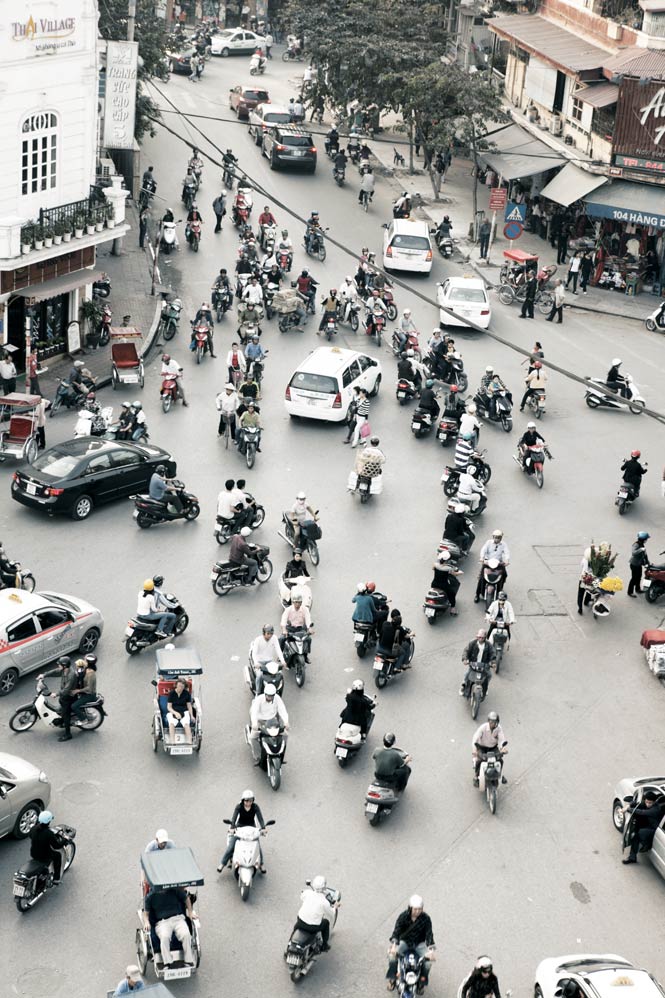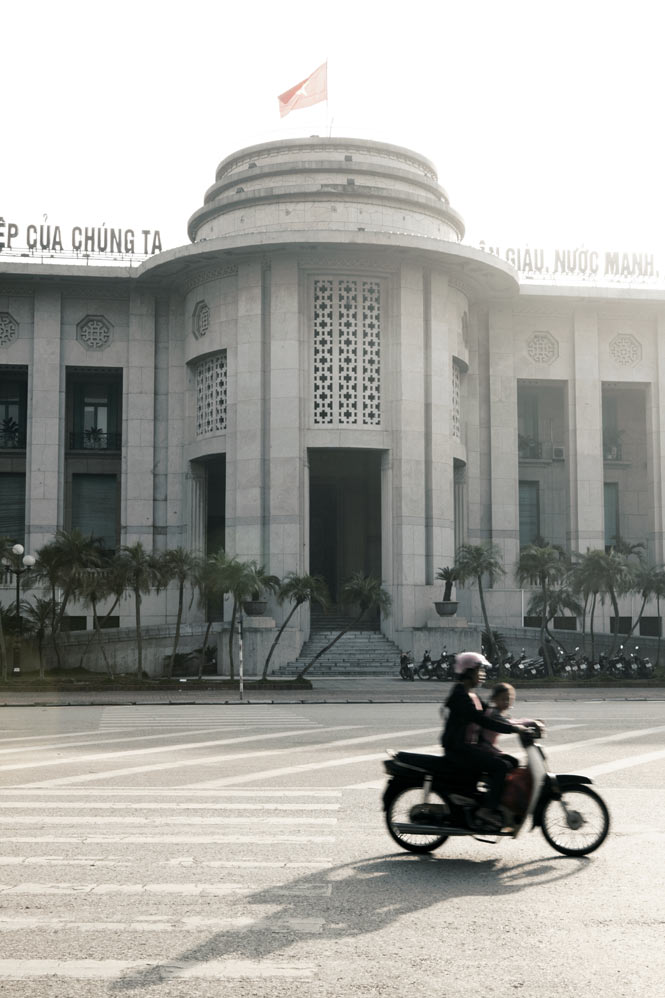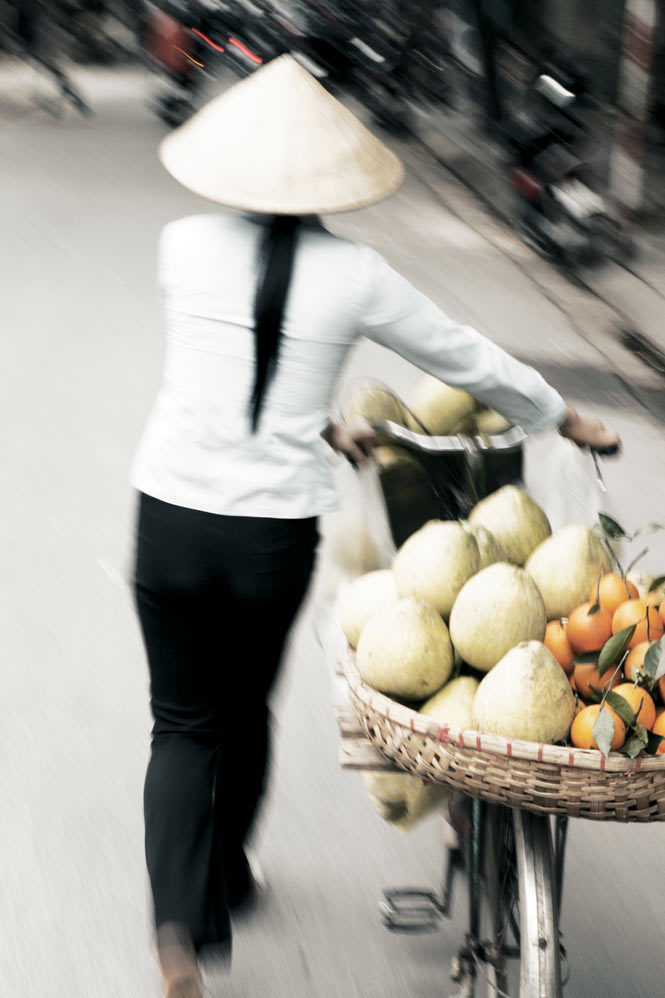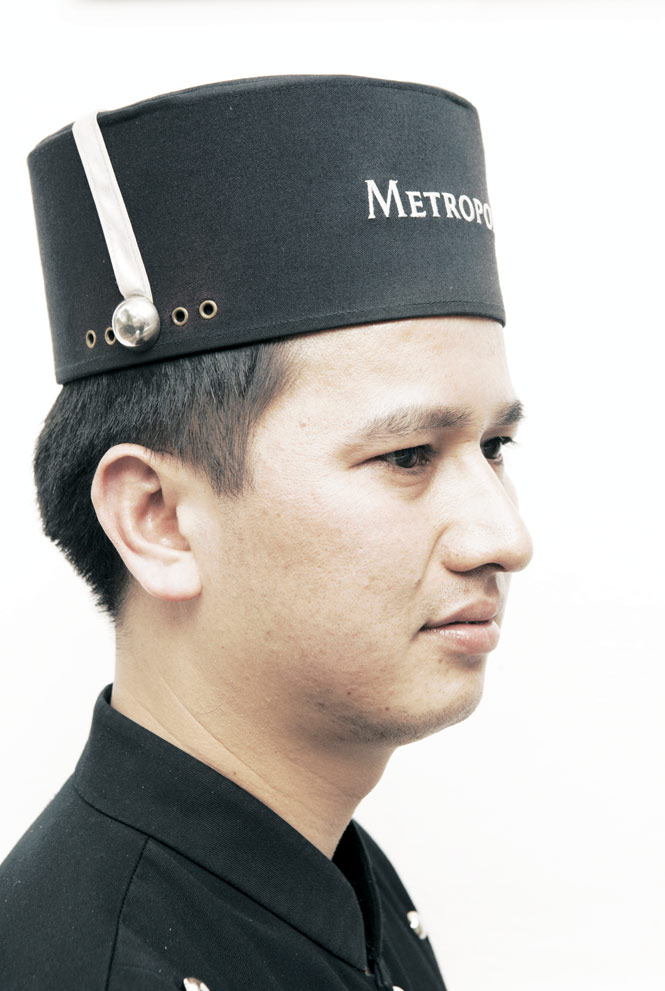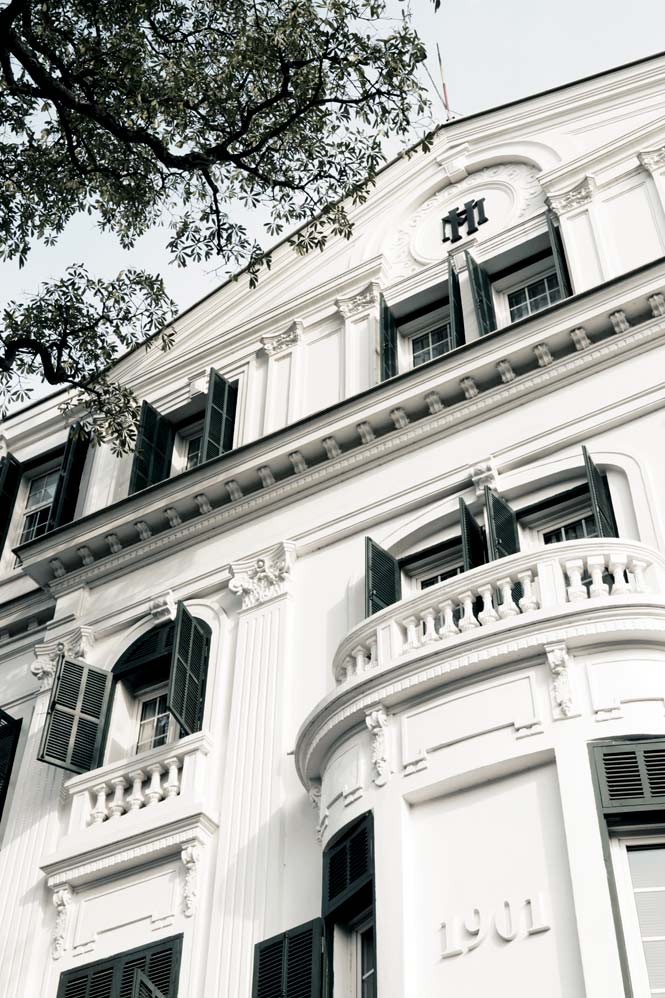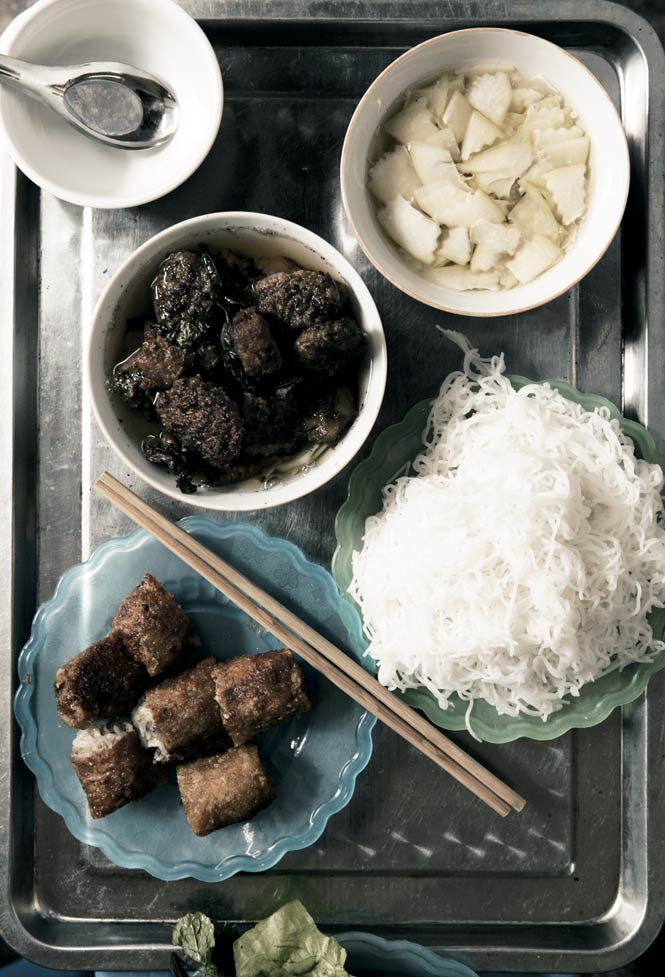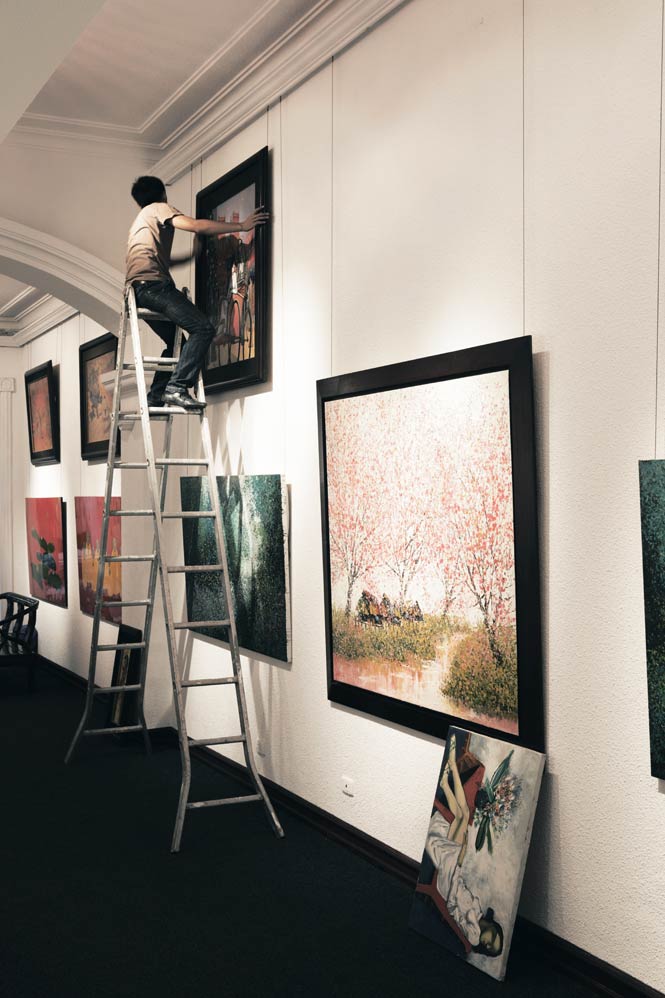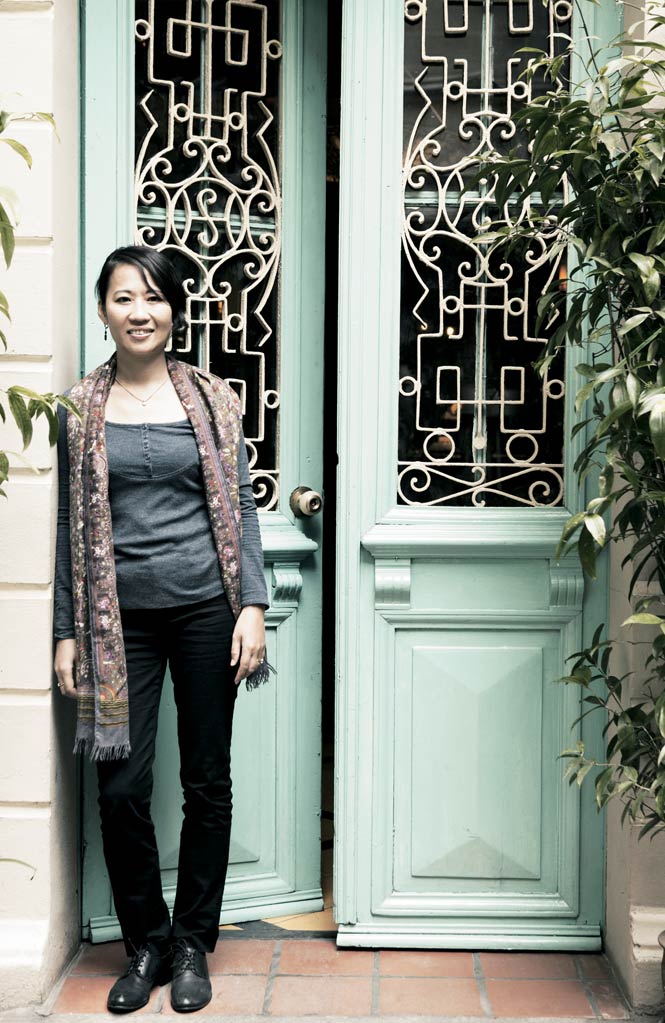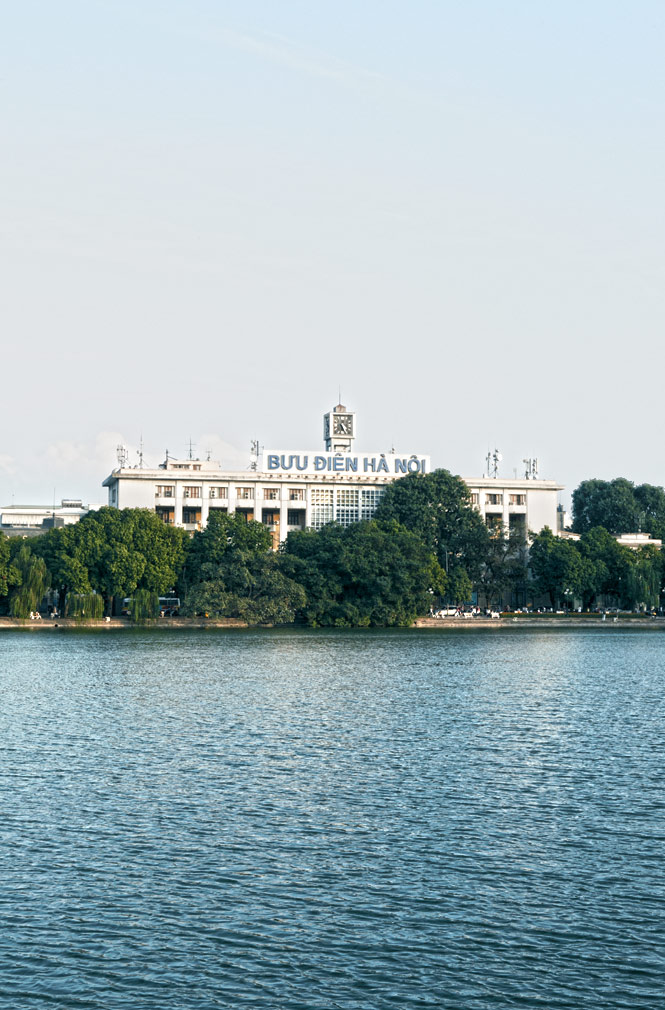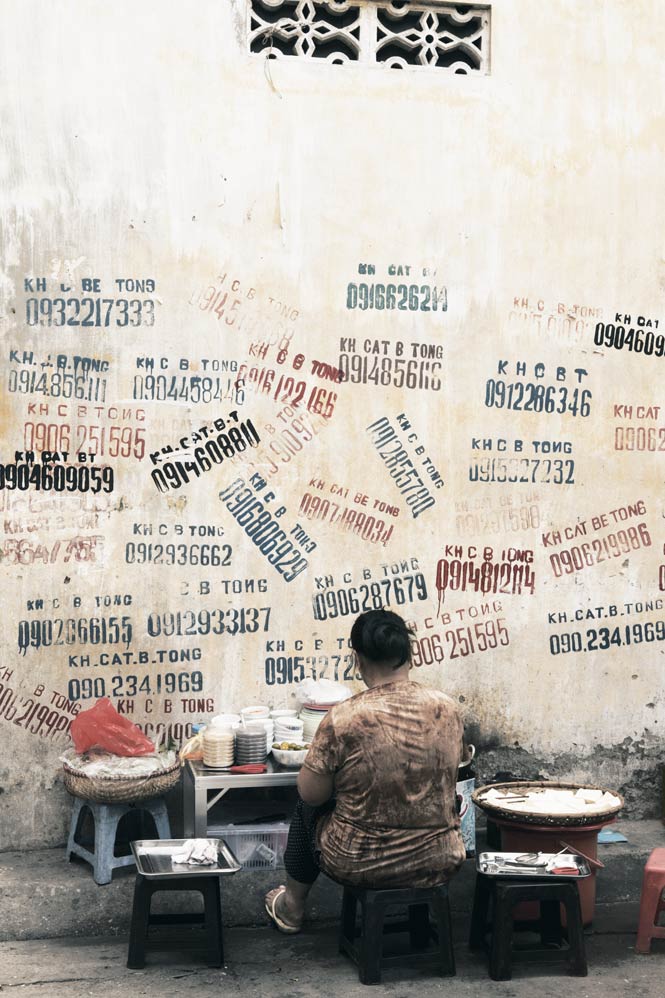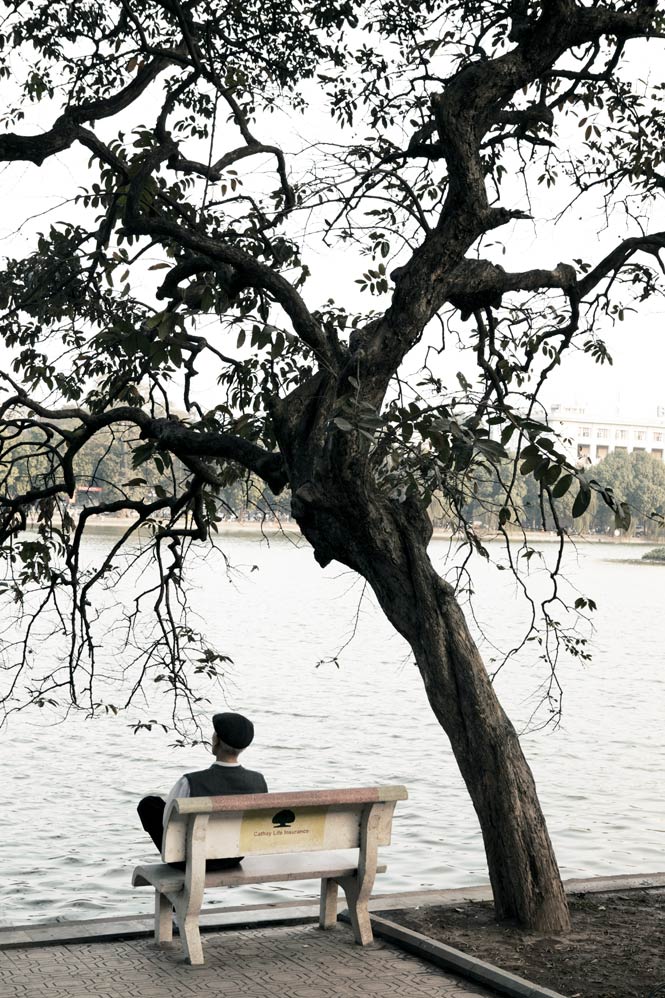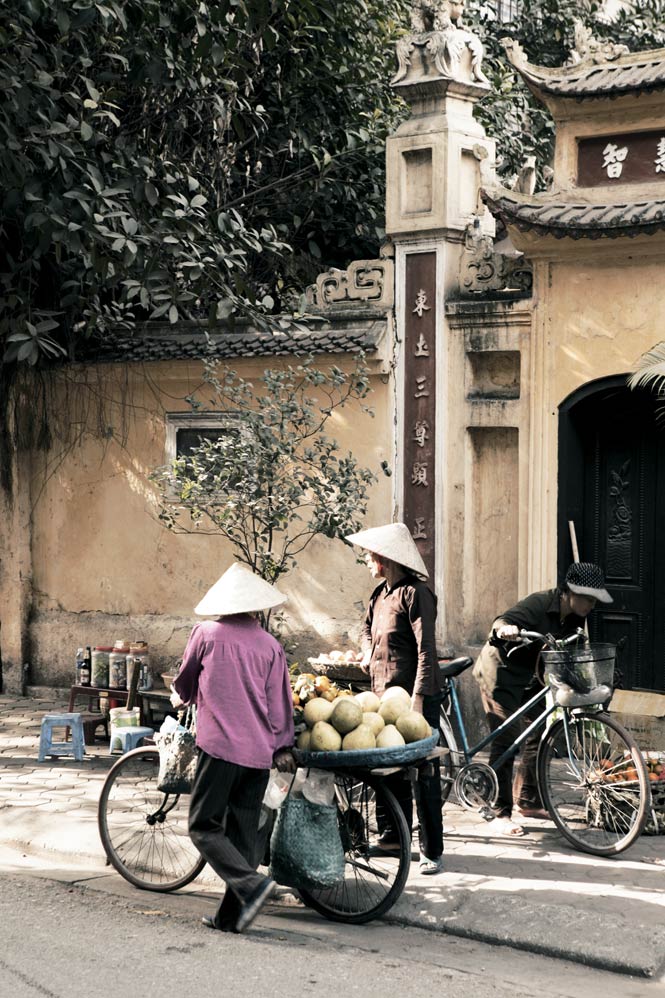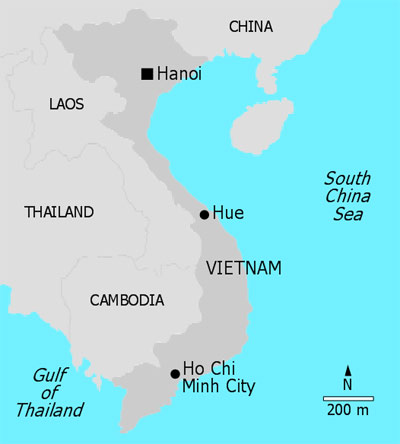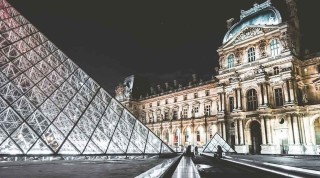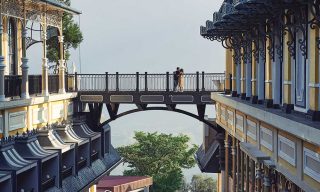Above: Stone mausoleum that holds the glass-encased remains of Ho Chi Minh.
Striding confidently into the 21st century, Hanoi remains a community anchored to its past, harboring a rich artisanal heritage and intellectual life. And there’s never been a better time to visit; after all, it’s not every year that a city celebrates its 1,000th anniversary.
By Christopher R. Cox
Photographs by Martin Westlake
My first impressions of Hanoi were shaped while on assignment in 1992 for an American newspaper. Back then, the government imposed a nightly 10 o’clock curfew across the capital, by which time my prison-like hostel was in lockdown mode. Desperate to make an after-hours deadline, I went over the ompound’s two-meter wall one night and skulked though the shadows up Ngo Quyen Street to the Hotel Metropole. Save for a lone, squeaking cyclo pedicab, it was dead quiet.
In that pre-Internet age, the grand old colonial-era Metropole was the only place in the city—indeed in all of northern Vietnam —with an international fax machine. This was also the pre-MasterCard age in the socialist republic, so I forked over US$50 in cash to the hotel’s concierge—the going rate to transmit two handwritten pages—and thought to myself: There’s no capitalist quite like a Communist.
Flash forward to 2010, and Hanoi is a city transformed. Cyclos have been largely replaced by fleets of air-conditioned taxicabs. Fax machines still exist, though even the humblest guesthouse has Wi-Fi. The range of bars and restaurants—everything from nouvelle Vietnamese to gourmet fusion and authentic tapas—has expanded dramatically, as have lodging options. The Metropole, now run by the Accor group under its luxury Sofitel Legend brand, has grown nearly four-fold, to 364 rooms; a lavish new InterContinental overlooks the 800-year-old Golden Lotus Pagoda from its perch on Ho Tay, the city’s largest lake; and there’s even a sleek, boutique-style property, the Mövenpick Hotel Hanoi, catering to business-minded travelers.
There’s no question the capital is on the go: a recent study by PricewaterhouseCoopers predicts Hanoi will have the world’s highest average growth among urban economies from 2008 to 2025. That’s a startling forecast, particularly for a place that isn’t exactly a start-up; this year, Hanoi will celebrate its founding 1,000 years ago, when Emperor Ly Thai To established his new capital along the banks of the Red River. And even as the city plunges headlong into the 21st century, its past remains palpable and venerated, from the 11th-century Temple of Literature, which trained the nation’s elite for nearly 900 years, to the giant stone mausoleum of Ho Chi Minh, who founded the Vietnamese Communist Party and served as president of the Democratic Republic of Vietnam (or North Vietnam) from 1945 until his death in 1969.
Hanoi is still a very different place from Ho Chi Minh’s namesake southern city—the former Saigon—which emerged after reunification in 1975 as the nation’s unabashed commercial and entertainment center. Jeff Richardson, an American who’s lived in the capital since 1993, offers a familial Vietnamese analogy to explain the distinction: “Ho Chi Minh City is the naughty younger sister who wants to break out, who wears revealing clothes on the street. Hanoi is the older sister, who has to keep order in the house.”
Certainly, there is a modicum of order in Hanoi. The demolition-derby standards of Ho Chi Minh City’s traffic—not to mention the aggressive tactics of its street urchins and vendors—rarely apply here. There is also no equivalent to rollicking Saigonese nightlife; here, the clubs and pubs are typically shuttered by midnight. Hanoi’s crowded sidewalks hold open-air markets, pho stands, and beer stalls well into the evening, but by dawn the pavements have been cleared to serve as early-morning badminton courts.
“The pace of development here is different than in Ho Chi Minh City,” says Richardson. “This place still has its soul.”
Mornings in Hanoi are at their most magical along willow-rimmed Hoan Kiem Lake, which attracts scores of joggers as well as elderly tai chi enthusiasts who go through their motions as the mist lifts on the iconic Tortoise Tower and an islet anchored by the Ngoc Son Temple. The lake takes its name, which means “Restored Sword,” from an Arthurian-style legend about the 15th-century emperor Le Loi, to whom a fisherman gave a magical weapon that he used to drive Chinese invaders from Vietnam.
This beloved story is reenacted at the nearby Thang Long Water Puppet Theatre, where performers keep alive a millennium-old art form that features elaborate, articulated fig-wood marionettes. They recount Le Loi’s victory and subsequent boat trip on the lake, where a golden turtle surfaced and requested the sword. Le Loi relinquished the blade, which the turtle then carried into the watery depths.
A tall tale? Well, the Ngoc Son pagoda displays the stuffed remains of an enormous, 250-kilogram tortoise captured (sword-free) in the murky lake in 1968, a time when fighting against the South Vietnamese and their American allies had reached a fever pitch. Biologists estimated the animal to be approximately 500 years old, which dovetailed nicely with the Le Loi story. A single living specimen, identified as the giant soft-shell turtle (Rafetus swinhoei), one of the world’s most critically endangered reptiles, is still periodically sighted in Hoan Kiem Lake, often at auspicious times, as when Hanoi hosted the 2006 APEC summit.
Lucky turtles aside, the city’s heart beats strongest in the teeming Old Quarter, the nation’s oldest urban area and one of the most densely populated neighborhoods in Southeast Asia. Lying just north of Hoan Kiem Lake, each of its three dozen streets was once occupied by a separate artisan’s guild specializing in a particular product: Hang Bac was the street of silversmiths, while Hang Gai dealt in silk and Hang Ma sold votive papers. Eight centuries later, this mercantile maze is still dominated by family-run businesses that concentrate on a single trade: Hang Gai remains the place for silk, while Hang Mam, originally known for its pickled fish, now traffics in tombstones.
Walk the warren of crowded streets lined with “tube houses” —residences notable for their long, lean layouts (they were built at a time when property taxes were based on street frontage) interspersed with courtyards and atria—and you’ll sense the energetic mix of community and commerce. This is the old Asia that’s largely vanished from the rest of the region’s major cities, a bustling streetscape where everyone’s lives and livelihoods are inextricably linked and spill out onto overflowing sidewalks and narrow lanes.
“Everyone knows each other very well here,” says Duong Thu Nga, a graphic designer who grew up on Hang Dong Street. “It’s a very small world.”
A world at once medieval and modern: tinsmiths hammer and solder sheets of metal on Hang Thiec Street while wizened women shoulder wooden yokes groaning under the weight of ripe bananas and papaya, and hi-so matrons emerge from late-model BMWs and Audis to shop for tailor-made shoes and dresses. Think of a product—a shirt, a mailbox, a musical instrument, a chop—and there’s someone within this one-kilometer-square hive of humanity who will handcraft the item while you wait.
Above, from left: A doorman at the grand old Metropole hotel; the facade of the hotel’s original 1901 wing; bun cha (grilled pork patties with rice noodles) at an Old Quarter eatery; hanging canvases at the well-curated Apricot Gallery.
The Old Quarter is also the hub of a daily Hanoi ritual, bia hoi. Come 5 p.m., folks knock off work and grab a street-side plastic stool for a glass or three of fresh-brewed draft beer that sells for just pennies a serving. At the center of this beer-fest is Bia Hoi Corner, the intersection of Ta Hien and Luong Ngoc Quyen streets, where all four corners are crowded with thirsty Vietnamese and travelers toasting their budget-beer success.
Above, from left: Pictures of Ho Chi Minh, The Metropole’s Indochine-styled Graham Greene suite; River fish for sale near the Long Bien Bridge; cooking up street food in the Old Quarter.
Thankfully for teetotalers, the French also endowed Hanoi with a fine-ground coffee culture. There are funky hangouts galore, including Café Lam on the eastern edge of the Old Quarter, a fourth-generation family business that steamed its first ca phe in 1954. Café Lam will never be mistaken for a Starbucks: its child-sized plastic stools and tiny wooden tables share floor space with a half-dozen motor scooters, while the walls are covered with paintings by generations of starving artists who traded landscapes for their lattes.
True to its guild-age ethos, the Old Quarter is home as well to hole-in-the-wall eateries that specialize in a single dish. Just up Nguyen Huu Huan Street from Café Lam, Xoi Yen has a city-wide reputation for its xoi—sticky rice steamed with coconut milk and topped with shavings of mung-bean cake, sun-dried sausage, and shredded pork. Farther west on Duong Thanh Street, several places concentrate on cha ca, a type of catfish grilled with turmeric and presented tableside in a skillet to be stir-fried alongside fresh dill and scallions, and then placed over rice noodles with mint, cilantro, pungent nuoc mam fish sauce, chilies, and skinned peanuts.
While Saigon-centric fare is the default setting for most Vietnamese restaurants overseas (the Vietnamese diaspora is overwhelmingly comprised of refugees who fled the south during the Second Indochina War), Hanoi residents consider their cuisine far more sophisticated and subtle than the sweeter entrees of Ho Chi Minh City, or even the spicy, nouvelle-portioned fare of Hue, which served as the 19th-century capital of the Nguyen dynasty.
It is widely held that Vietnam’s signature dish, hearty pho soup, was perfected in Hanoi. Chef Didier Corlou, a native of Brittany who’s lived in Hanoi since 1992 and owns La Verticale restaurant, terms it “a soup, a cuisine, an art, an identity.” Here, pho is all about the rich, savory stock—a long-simmering broth of beef bones spiced with a hint of star anise, ginger, cinnamon, and cardamom, served with rice noodles and a few wafer-thin slices of beef.
“When it comes to food, Hanoians are very demanding,” relates Stephane Yvin, who, along with his Hanoi-born wife, Huong, a third-generation restaurateur, operates the well-regarded Green Tangerine bistro. Set in a lovingly restored 1928 Old Quarter tube house, the restaurant dishes up a fusion of East-meets-West flavors, like duck encrusted with tia to (shiso leaf) herbs and a sauce of eggplant, saffron, and fermented rice wine. “There’s just a lot more gastronomy here than in Saigon,” Yvin says.
When I ask locals to name their favorite single spot in the city, invariably I receive the same answer: Van Mieu, the Temple of Literature.
“It’s the feeling I get when I’m there,” says Nguyen Ngoc Thanh, who works at a Hanoi-based travel company called Footprint. “Hanoi is a very busy city, but you feel different when you enter Van Mieu.”
Beyond a great portico one kilometer west of Hoan Kiem Lake in the Dong Da district, I enter a traffic-free oasis of walled courtyards, enormous tamarind trees, placid lotus-filled pools, and Chinese-style tile-roofed sanctuaries. The Temple of Literature was established by Emperor Ly Thanh Tong, grandson of the city’s founder, in 1070—a time when most of Europe was still foundering in the Dark Ages—as the nation’s first university, dedicated to the “the training of men of talent.”
Promising Confucian scholars and court mandarins from across the country attended Van Mieu for three years of rigorous study in literature, poetry, and penmanship. As if to underscore Vietnamese reverence for education and scholarship, a pair of stone stelae outside the main gates instructed everyone, even the emperor, to dismount their horses before entering the compound. Inside, the names of more than 1,300 students who passed the rigorous exam from 1442 until 1779 were inscribed on more slabs of stone, along with the maxim: “Virtuous and talented men are state-sustaining elements.”
Eighty-two of these tablets survive and rest on the backs of stone tortoises, a symbol of wisdom and longevity, flanking the Well of Heavenly Clarity. When I examine the statues more closely, I see that their heads have been worn smooth; continuing a centuries-old practice, local students rub them before tests for good luck. But hopeful bureaucrat-poets no longer follow the tradition: the Temple of Literature conducted its last exams in 1919.
Because of northern Vietnam’s convoluted, contentious past—periodic occupation by the Chinese, a succession of bloody struggles with the Mongols, the Cham, and, more recently, the French, the Americans, and their own southern cousins—the weight of history hangs heavy over Hanoi.
The National Museum of Vietnamese History is housed inside one of the loveliest buildings in all of Southeast Asia, an ocher-hued Indochine confection designed by French architect Ernest Hébrard. Built in 1932 for the École Française d’Extrême- Orient, it now holds 3,000 years’ worth of artifacts, from ancient stone tools and bronze drums to sumptuous Nguyen dynasty robes and the original 1945 score for “March to the Front,” Vietnam’s national anthem. And what looks to be nothing more than crumbling old logs are actually evidence of Vietnam’s greatest naval triumph: ironwood stakes that were driven into the bottom of the Bach Dang River in 1288 to trap and destroy a Mongol invasion fleet on a falling tide.
Above, from left: By day, the willow-shaded banks of Hoan Kiem Lake attract tai chi enthusiasts, joggers, and people who simply want to relax and take in the scenery; Soviet symbolism makes for an imposing entry to the Ho Chi Minh Museum; Fruit sellers chatting in front of the Ly Quoc Su pagoda; French architecture in the Hoan Kiem district.
History is usually written by the victors, and Hanoi is no different. While two-thirds of Hoa Lo Prison (the infamous “Hanoi Hilton”) was demolished in 1993 for the construction of a high-rise apartment complex, its remaining cells and dungeons were preserved as a small museum. The bulk of the exhibits (iron fetters, a razor-sharp guillotine) recount the cruelty of French jailers during the colonial era, though a few rooms are devoted to the Second Indochina War, when the facility held and tortured American prisoners of war. Among the artifacts are propaganda photographs of POWs preparing a Christmas dinner and Hanoi residents “saving” an American fighter pilot shot down over Truc Bach Lake in 1967. That flier was John McCain, the 2008 Republican presidential hopeful, who would endure more than five long, brutal years at Hoa Lo, where his helmet and flight suit are now displayed.
Another day I wander up villa-lined Dien Bien Phu Street, past the turret-like Flag Tower to the enormous mausoleum that holds the glass-encased remains of Ho Chi Minh, preserved by the same Russian experts who embalmed Vladimir Lenin. Uncle Ho, who had requested his ashes be scattered across Vietnam, would probably have blanched at the hero worship. His own modest lifestyle is on view behind the nearby Presidential Palace, a Renaissance-style pile that once served as the headquarters of the governor-general of French Indochina. Refusing to occupy such an ornate building, Ho Chi Minh lived instead in a simple stilted house overlooking a small pond on the mansion’s grounds. The only luxuries seem to have been three telephones and an air-raid bunker built into a small knoll and blanketed with banana trees.
It’s difficult to imagine what the ascetic leader would now think of this area, a popular tourist attraction surrounded by cafés, ATMs, and carts selling Pepsi and knock-off Vietnamese Army pith helmets.
Having tired of sightseeing, I return to the seductive, sinuous streets and sensory overload of the Old Quarter. A few glasses of bia hoi later, I find myself teetering atop a tiny stool along Nguyen Huu Huan Street while Tran Hop Lan prepares me a steaming bowl of xoi. For the past decade, Lan and her husband have worked this buckled pavement, serving as many as 100 diners a night at their impromptu café. There are stools, a piece of plywood laden with metal rice pots and plastic containers of toppings, even a small floor fan and fluorescent light, which Lan connects to an electrical outlet attached to … a tree.
“Is that modern or what?” asks the fiftysomething cook proudly. “I turn it off when the rain comes.”
I wonder aloud where she gets the electricity, imagining she has illegally tapped into the overhead power lines. No way, Lan responds, as if to say: This isn’t Saigon. She points up the street; she runs a line all the way from her home, 100 meters away. And I think to myself: There’s no entrepreneur quite like a Hanoian.
THE DETAILS:
Hanoi
Getting There
Hanoi’s Noi Bai International Airport is well connected to major Asian cities via Vietnam Airlines (vietnamairlines.com), which also offers multiple daily flights to the capital from Ho Chi Minh City. Singapore Airlines (singaporeair.com) and budget carrier Tiger Airways (tigerairways.com) operate regular services from Singapore, while Cathay Pacific (cathaypacific.com) flies from Hong Kong.
When to Go
The best mix of clear skies and pleasant temperatures is springtime, from March through May. Bear in mind that the entire country goes on holiday for Tet, the Vietnamese New Year, which this year begins on February 14.
Where to Stay
The landmark Sofitel Legend Metropole Hanoi (15 Ngo Quyen St.; 84-4/3826-6919; softel.com; doubles from US$195) has served as Hanoi’s most prestigious hotel since 1901, attracting travelers of all stripes, from heads of state to Hollywood A-listers. Following a 2008 expansion, it now has 364 rooms; the new wing features a business center, a library, and 24-hour butler service, while quarters in the original Colonial Wing score high for ambience. There’s also an authentic French patisserie and a brand-new spa.
The main draw at the two-year-old InterContinental Hanoi Westlake (1A Nghi Tam; 84-4/ 270-8888; intercontinental.com; doubles from US$184) is the scenery: most rooms overlook Hanoi’s Ho Tay (West Lake) and the Golden Lotus Pagoda. Back in the center of town, the Mövenpick Hotel Hanoi (83A Ly Thuong Kiet St.; 84-4/3822-2800; moevenpick-hotels.com; doubles from $130) features a residential feel and all the amenities to satisfy executive travelers. Located on Hanoi’s trendiest retail street, the 26-room Church Hotel (9 Nha Tho St.; 84-4/3928-8118; churchhotel.com.vn; doubles from US$57) lives up to its boutique billing, while the tiny Green Mango (18 Hang Quat St.; 84-4/3928-9916; greenmango.vn; doubles from US$55) offers the Old Quarter’s most stylish stay.
Where to Eat
As Vietnam’s political and artistic center, Hanoi has a diverse dining scene. Two of the finest restaurants, Didier Corlou’s La Verticale (19 Ngo Van So St.; 84-4/3944-6317) and Old Quarter gem Green Tangerine (48 Hang Be St.; 84-4/3825-1286) fuse Vietnamese and Continental flavors. The Metropole’s elegant Spices Garden offers cooking classes and a Hanoi street-food buffet, while innovative European comfort food is the hallmark of the 10-table La (25 Ly Quoc Su St.; 84-4/3928-8933).
Among the best of the Old Quarter’s single-dish restaurants are Cha Ca Thang Long (31 Duong Thanh St.; 84-4/3824-5115), where the specialty is catfish, and Xoi Yen (35B Nguyen Huu Huan St.; 84-4/ 3926-3427), for its hearty steamed-rice dish. Just down the street is Café Lam (60 Nguyen Huu Huan St.; 84-4/ 3824-5940), one of Hanoi’s most venerated java joints.
What to Do
The capital has a wealth of cultural institutions, but its greatest attraction may be the medieval Old Quarter. Plan to spend at least a few hours wandering the warren of streets; a fine example of a “tube house” is 87 Ma May, now restored as a small museum. The Thang Long Water Puppet Theatre (57 Dinh Tien Hoang St.) is good, hokey fun, even if you don’t speak Vietnamese, while the wondrous architecture is reason enough to visit the National Museum of Vietnamese History (1 Trang Tien St.). A short taxi ride west are the must-see Temple of Literature (Van Mieu and Quoc Tu Giam Sts.) and the Ba Dinh district complex holding Ho Chi Minh’s Mausoleum, his house, and the One Pillar Pagoda. Military-history buffs will want to inspect Hoa Lo Prison (1 Hoa Lo St.) and the Military History Museum (28A Dien Bien Phu St.), where artifacts include a French cannon captured at Dien Bien Bhu and a talismanic T-54B tank, which crashed through the gates of the Presidential Palace during North Vietnam’s triumphant April 1975 conquest of Saigon. –CRC


